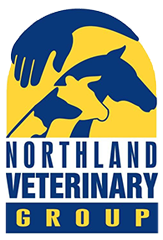 Theileriosis is a disease caused by a species of Theileria, a blood-borne parasite, that only affects cattle and is primarily transmitted by ticks.
Theileriosis is a disease caused by a species of Theileria, a blood-borne parasite, that only affects cattle and is primarily transmitted by ticks.
Up here in Northland, Theileria has been present for quite some time but a new strain was first found in Northland called ikeda in late 2012. This new strain has been associated with anaemia and death in cattle. This disease has now spread throughout the upper half of the North Island and some cases found as far south as Wanganui.
Theileriosis tends to affect calves 2-3 months old and cows at calving time. In the last few weeks our practice has seen a handful of cases involving calves, a beef cow and also a dairy cow.
Signs
- Pale or yellow, rather than healthy pink, vulva – See Field Anaemia Nearest Indicator (F.A.N.I) card.
- Whites of eyes yellow (a sign of jaundice)
- Lethargy – exercise intolerance, cows lagging on the walk to the shed
- Sick cows not responding as expected to treatment for conditions such as milk fever
- Cows are off their food and appear hollow sided
- A decrease in milk production
- Sudden death especially in late pregnancy or early lactation.
The diagnosis of Theileriosis is based on combination of visible signs of anaemia and tests carried out on blood samples.
Treatment
Depending on the severity of infection, not all cows will require blood transfusions or drug treatment, however you will need to:
- Keep cattle in good condition and well fed so they are better able to cope with disease challenges and stressful events
- Minimise stress and movement of animals showing signs of infection – consider once a day milking
- Give affected animals easy to eat, high quality feed, plenty of water and access to shelter
- Blood transfusions are an option for valuable, severely anaemic animals
- A drug treatment, Buparvaquone (BPQ) – There are long withholding periods and special use conditions.
Cows – Meat WHP: 18 months, Milk WHP: 43 days,
Calves born to treated cows WHP: 9 months
Calves that drink treated cows milk WHP: 91 days
- Vets have also used oxytetracyclines (Oxyvet LA, Engenmycin) with varying results, although use of this drug has not been scientifically supported. Withholding periods for this drug are much more user friendly.
Where to go from here?
- Observe cattle for signs of Theileriosis during high risk periods
- Calving, young calves (2-3 months), new arrivals, returning stock
- During periods when ticks are active, mid-August to mid-March.
- Strategic tick control
- Apply a tick control product during spring and autumn
- Graze susceptible paddocks with other non-bovine species.

